Four Ways to Exercise During Pregnancy

If you’re pregnant, it’s naturally important to keep in mind that your life and body will change and, consequently, so will your lifestyle. On that note, one of the many questions pregnant women have is: Can I exercise during pregnancy?
Fortunately, the answer is east: Of course!
However, not all types of exercise are recommended throughout pregnancy. It all depends on your condition prior to it and if you have any health problems or if pregnancy-related complications arise.
In this article, we’ll give you some brief guidelines.
Exercise During Pregnancy
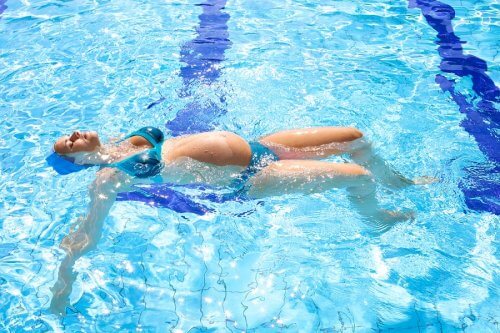
Regular exercise is highly recommended during pregnancy. Actually, it’ll help you stay fit and you’ll feel much better because of it.
In fact, the American College of Obstetrics and Gynecology recommends that pregnant women should exercise regularly for about 30 minutes a day, every day of the week.
However, exercise is not a good idea when there are complications. Thus, the contraindication is short and logical: don’t overdo it.
However, if you exercised before pregnancy, then you can continue to do so in moderation. In fact, low-impact aerobic exercise is recommended during pregnancy.
For this reason, our advice for you is to exercise under the supervision of a monitor or by a physical education specialist who’s familiar with your condition.
In any case, you should always consult your obstetrician or midwife before starting any new physical activity regime throughout pregnancy.
The Benefits of Physical Exercise During Pregnancy
In addition to the benefits of physical activity at any time, physical exercise during pregnancy has other benefits to consider:
- It’ll help you stay fit and well-toned and it will improve your posture which, in turn, will improve your health. This is great because it’ll help you prevent back pain.
- Also, it’ll improve your resistance. This means you’ll hep prevent the fatigue that’s so typical during pregnancy.
- In addition, there’s scientific evidence that pregnant women who exercise have a lower risk of gestational diabetes.
- Further, it’ll help you maintain your ideal weight during pregnancy and this will make it easier to regain your figure after delivery.
- Finally, physical exercise will help you relieve stress and improve your well-being and ease your delivery.
What Type of Exercise During Pregnancy is Recommended
As we mentioned above, doctors particularly recommend low-impact aerobics. In addition, keep in mind the importance of stretching both before and after physical activity.
We recommend: High Blood Pressure during Pregnancy: Symptoms and Treatments
1. Walking
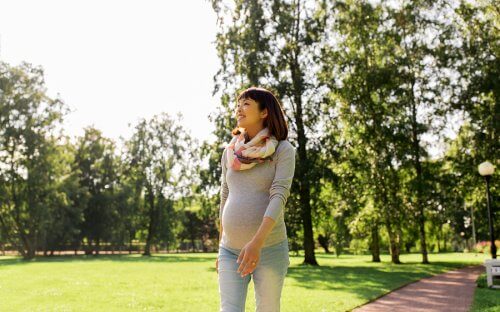
Walking may be the most recommended exercise during pregnancy from the beginning of pregnancy until the end.
In addition to its best-known benefits, walking eases labor and helps correct problems such as the swelling of your feet and legs, and/or constipation. Also, it allows you to maintain your optimal weight without any overexertion. Don’t hesitate to walk every day and as much as you wish.
2. Water Exercise
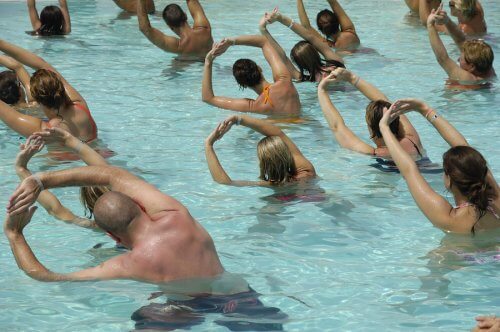
This is another form of exercise that’s highly recommended during pregnancy. Your buoyancy inside the water makes it easier to exercise by keeping the load off your muscles and joints, thus reducing the possibility of injury.
In this regard, water aerobics and swimming are ideal exercises to practice throughout your pregnancy. They’ll promote stronger muscles and reduce back pain. In addition, they’ll improve your circulatory and respiratory systems and your well-being in general.
3. Yoga
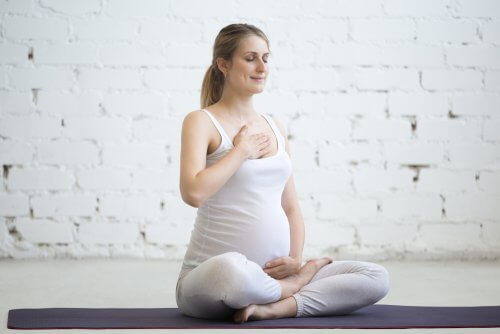
Given the relaxing nature of yoga, it can help you relax and perhaps even correct your posture. In this regard, it’ll also help you reduce any back pain you may have as well as relieve tension and stress.
Overall, this is a highly recommended type of exercise to prepare for childbirth.
However, please make sure to consult your doctor or baby delivery specialist about yoga. They should be familiar with your specific case and can help you design the perfect routine for your needs.
We recommend: What to Eat When You’re Pregnant
4. Pilates
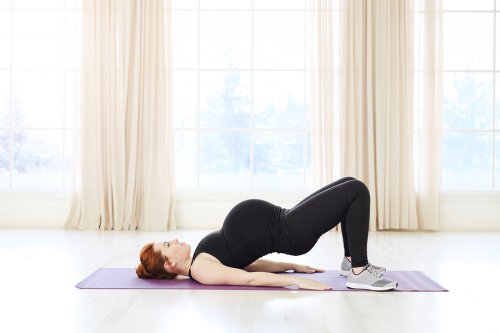
Pilates strengthens your core, which includes the muscles of your abdomen, back, and pelvic floor. In this regard, it’s a great exercise to do throughout your pregnancy as it won’t put too much pressure on your joints.
Actually, Pilates can help you prevent back pain, maintain balance, learn to control your breathing, and relax. In addition, as we already mentioned, it also focuses on the pelvic area muscles. Therefore, you can benefit even more if you add a set of Kegel exercises.
However, it’s very important get a trainer or specialist who’ll help you develop a specific routine for your specific case.
Conclusion
In conclusion, you should definitely remain active during pregnancy, unless there is a medical impediment to it. After consulting your doctor or gynecologist, add the best routine that’ll work for you and that you’ll enjoy.
Also, keep in mind that physical exercise also promotes your bodily self-awareness and self-perception. So, throughout these months of change for both you and your baby, exercise can even help strengthen your bond with that new life that’s developing within you.
All cited sources were thoroughly reviewed by our team to ensure their quality, reliability, currency, and validity. The bibliography of this article was considered reliable and of academic or scientific accuracy.
- M.J. Aguilar Cordero et al. “Actividad física en embarazadas y su influencia en parámetros materno-fetales; revisión sistemática”, Nutr Hosp. 2014;30(4):719-726
- Danielle Symons Downs et al. “Physical Activity and Pregnancy: Past and Present Evidence and Future Recommendations”, Res Q Exerc Sport. 2012 Dec; 83(4): 485–502.
- Kelly R. Evenson et al. “Guidelines for Physical Activity during Pregnancy: Comparisons From Around the World”, Am J Lifestyle Med. 2014 March/April; 8(2): 102–121.
- Gema Sanabria Martínez, Efectos de la actividad física durante el embarazo: resultados maternos y neonatales, Tesis doctoral, Universidad de Castilla la Mancha, s.f. https://ruidera.uclm.es/xmlui/bitstream/handle/10578/9027/TESIS%20Sanabria%20Mart%C3%ADnez.pdf?sequence=1
This text is provided for informational purposes only and does not replace consultation with a professional. If in doubt, consult your specialist.








